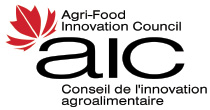There’s a better way to conduct research, says ag official
By Robert Arnason, The Western Producer
There is a standard formula for agricultural research in Canada: scientist applies for funding, receives funding, does the research and publishes a paper.
That model may be the norm, but it’s not particularly effective for spreading knowledge to producers or the public, said Serge Buy, Agricultural Institute of Canada (AIC) chief executive officer.
“It’s not sufficient having a researcher work in a silo … with some (scientist) saying in the end ‘we’ve done this.’ … Then a communications person brought it and saying ‘this was done’. Then after that hoping everyone is going to applaud, or agree … or do something with this (information).”
In July, the AIC published a report on disseminating agricultural research in Canada based on the discussions at a conference held in April.
The paper featured several key finding:
- Research dissemination usually happens at the end of the project.
- Consumers and producers should be engaged in research earlier in the process.
- Farmers and end users should have a participatory role in the research.
Buy said the public has a role in agricultural research because recent history shows that consumers may reject innovations like genetically modified foods.
“If the end users are completely kept in the dark (about research), often the reactions can be different than what you were expecting.”
Scientists and the research sector need to connect with the public before the final results are published or the technology is unveiled so people have a better understanding of what is being studied and why.
“Disseminating ag research doesn’t start and end at the end of the process. It (should) start at the beginning,” Buy said.
“Why are we doing research? … How is it done? Where are we going with this?”
The report said there is a traditional method of disseminating ag research, where scientists publish in peer-reviewed journals and present results at academic conferences. Those elements will continue to be part of the process but researchers must move beyond those venues.
“A knowledge transfer and translation component should be a mandatory condition for conducting research with public funds,” the report said.
“The use of other channels, such as online knowledge resources, continuing education activities and face-to-face communications are also necessary to ensure stakeholders outside academia can utilize new knowledge.”
Later this summer the AIC is expected to publish a detailed report with best practices for agricultural dissemination in Canada.
Its initial report and overview of the issue is available on the AIC website at www.aic.ca/publications/2016-conference-report/
